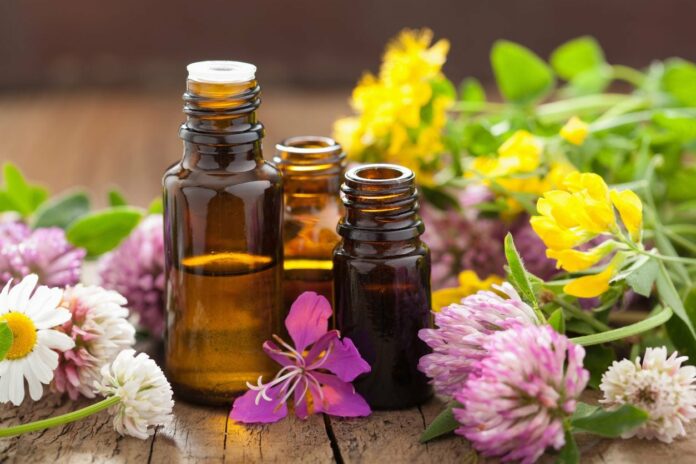Table of Contents
Aromatherapy, the art and science of using natural essential oils to enhance well-being, has become increasingly popular in recent years. With roots tracing back to ancient civilizations, this holistic practice has been embraced worldwide for its therapeutic benefits. However, as interest grows, so does the potential for common mistakes that can diminish the effectiveness or even cause harm. In this article, we’ll explore some of the most frequent errors in aromatherapy and offer practical tips on how to avoid them.
Introduction to Aromatherapy
Aromatherapy has been around for thousands of years, with early records found in ancient Egypt, China, and India. These cultures utilized essential oils for religious ceremonies, medicinal purposes, and even embalming. In modern times, aromatherapy has gained popularity as a complementary therapy, used to manage stress, improve mood, and enhance overall health. Despite its benefits, the practice requires knowledge and caution to ensure safety and efficacy.
Section 1: Common Mistakes in Choosing Essential Oils
Quality Matters
One of the most significant mistakes beginners make is not paying attention to the quality of essential oils. Poor-quality oils can be ineffective or even harmful.
- Look for Pure, Therapeutic-Grade Oils: Ensure the oils are 100% pure and free from additives or synthetic ingredients. Labels should clearly state “100% pure essential oil.”
- Research the Brand: Not all brands are created equal. Look for reputable companies that provide transparency about their sourcing and testing methods.
- Check for Third-Party Testing: High-quality brands often provide third-party testing results to verify the purity and potency of their oils.
Choosing the Right Oil for Your Needs
Another common mistake is selecting the wrong oil for a specific need. Each essential oil has unique properties and benefits.
- Know Your Oils: Familiarize yourself with the properties of different oils. For example, lavender is known for its calming effects, while peppermint can boost energy and focus.
- Understand Your Goals: Determine what you want to achieve with aromatherapy. Are you looking to reduce stress, alleviate pain, or improve sleep? Choose oils that align with your goals.
- Consult Resources: Use reliable books, websites, or consult with a certified aromatherapist to guide your selection.
Section 2: Mistakes in Aromatherapy Application
Overuse of Essential Oils
More is not always better when it comes to essential oils. Using too much can lead to adverse effects such as skin irritation, headaches, or respiratory issues.
- Follow Recommended Dosages: Adhere to guidelines for the appropriate amount of oil to use. Generally, a few drops are sufficient for most applications.
- Less is More: Start with a small amount and gradually increase if needed. Essential oils are highly concentrated, and a little goes a long way.
Improper Dilution
Essential oils should never be applied directly to the skin without dilution, as they can cause irritation or allergic reactions.
- Use Carrier Oils: Dilute essential oils with carrier oils such as jojoba, almond, or coconut oil. A common ratio is 1-2 drops of essential oil per teaspoon of carrier oil.
- Patch Test: Always perform a patch test before applying a new oil to a larger area of the body. Apply a small amount to the inside of your wrist and wait 24 hours to check for any adverse reactions.
Unsafe Application Methods
Certain application methods can be unsafe or less effective if not done correctly.
- Avoid Sensitive Areas: Never apply essential oils to sensitive areas such as eyes, ears, or mucous membranes.
- Use Proper Diffusers: When using a diffuser, follow the manufacturer’s instructions. Essential oils should be diffused in well-ventilated areas and not run continuously for extended periods.
- Ingestion Caution: Only ingest essential oils under the guidance of a qualified professional. Many oils are not safe for internal use and can be toxic.
Section 3: Common Misconceptions that Lead to Mistakes
Myth 1: All Essential Oils are Safe for Everyone
Not all essential oils are safe for everyone. Factors such as age, health conditions, and pregnancy can influence their safety.
- Children and Pets: Some oils are not safe for children or pets. For example, peppermint and eucalyptus should be avoided for young children.
- Pregnancy: Pregnant women should consult with a healthcare provider before using essential oils, as some can affect hormone levels or cause uterine contractions.
- Medical Conditions: Individuals with certain medical conditions should seek medical advice before using essential oils, especially those with respiratory issues, skin sensitivities, or allergies.
Myth 2: If It’s Natural, It’s Safe
While essential oils are natural, they are potent and can cause harm if not used correctly.
- Respect the Potency: Essential oils are highly concentrated plant extracts. Even natural substances can have powerful effects.
- Educate Yourself: Learn about the contraindications and potential side effects of each oil you plan to use.
Myth 3: Essential Oils Can Cure Diseases
Essential oils can support health and well-being but should not replace conventional medical treatments.
- Complementary Therapy: Use essential oils as a complementary therapy alongside medical treatments, not as a substitute.
- Consult Healthcare Providers: Always consult with a healthcare provider for serious health concerns or conditions.
Section 4: How to Avoid and Correct These Mistakes
Practical Tips for Safe Aromatherapy Practice
- Educate Yourself: Invest time in learning about aromatherapy. Take courses, read books, and follow reputable sources.
- Consult Professionals: Seek advice from certified aromatherapists or healthcare providers, especially if you are new to aromatherapy or have specific health concerns.
- Start Slow: Begin with a few essential oils and gradually expand your collection as you become more knowledgeable and comfortable.
- Maintain a Journal: Keep a journal of your aromatherapy experiences, noting which oils you used, how you used them, and the effects. This can help you track what works best for you.
- Stay Updated: Aromatherapy research is ongoing. Stay informed about new findings, safety guidelines, and best practices.
Correcting Common Mistakes
- Reevaluate Your Oils: Periodically review your essential oil collection. Check for expired oils and replace them if necessary.
- Adjust Dilution Ratios: If you experience skin irritation or other adverse effects, reassess your dilution ratios and adjust accordingly.
- Seek Guidance: If you encounter any issues or have questions, don’t hesitate to seek guidance from professionals or join aromatherapy communities for support and advice.
Conclusion
Aromatherapy offers numerous benefits for enhancing well-being, but it requires knowledge and careful practice to avoid common mistakes. By choosing high-quality oils, using proper application methods, and staying informed, you can enjoy the full potential of aromatherapy safely and effectively. Remember, this is a journey of exploration and learning, so take your time and savor the experience.
Ready to elevate your aromatherapy practice? Connect with our community of enthusiasts and experts, and don’t forget to share your experiences and tips. Happy diffusing!





